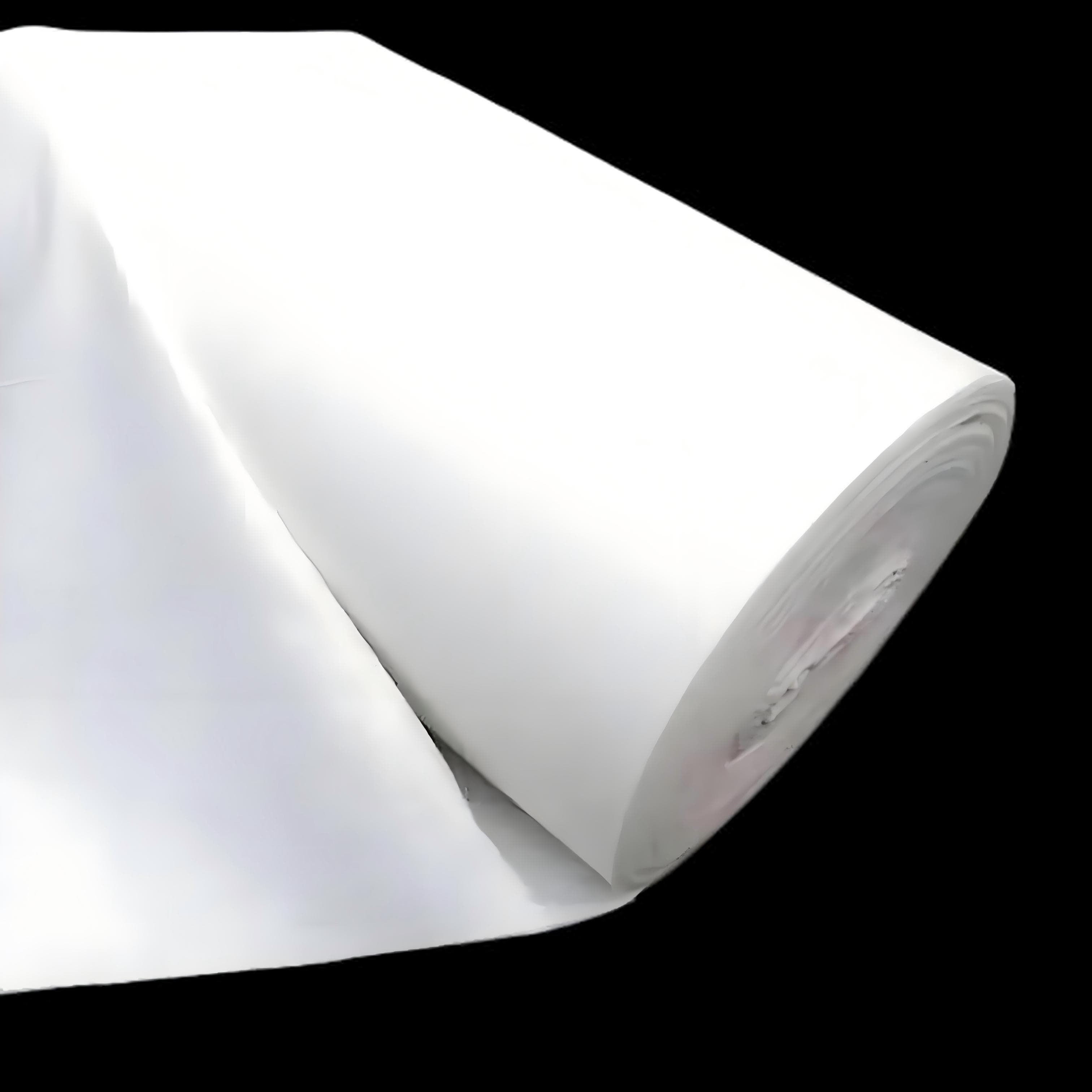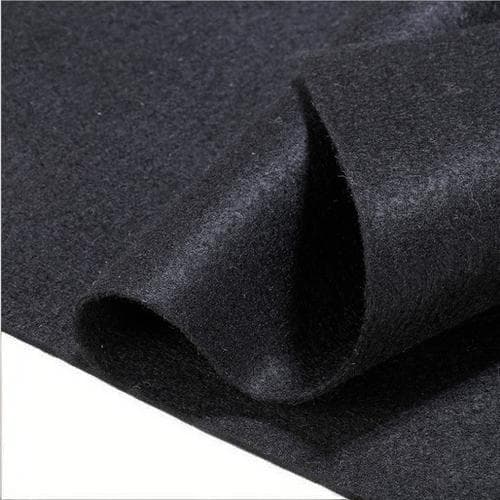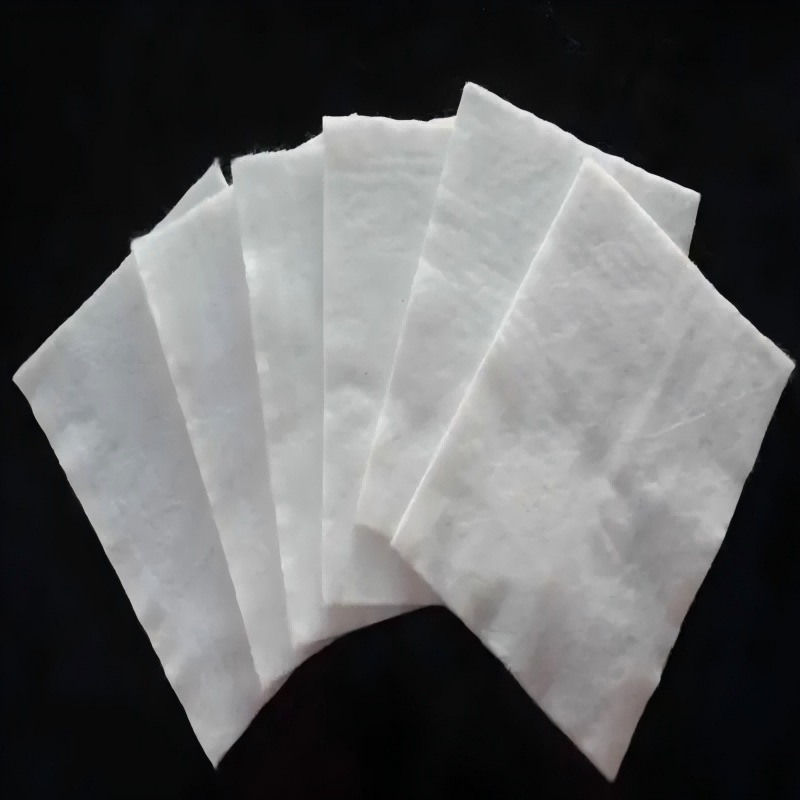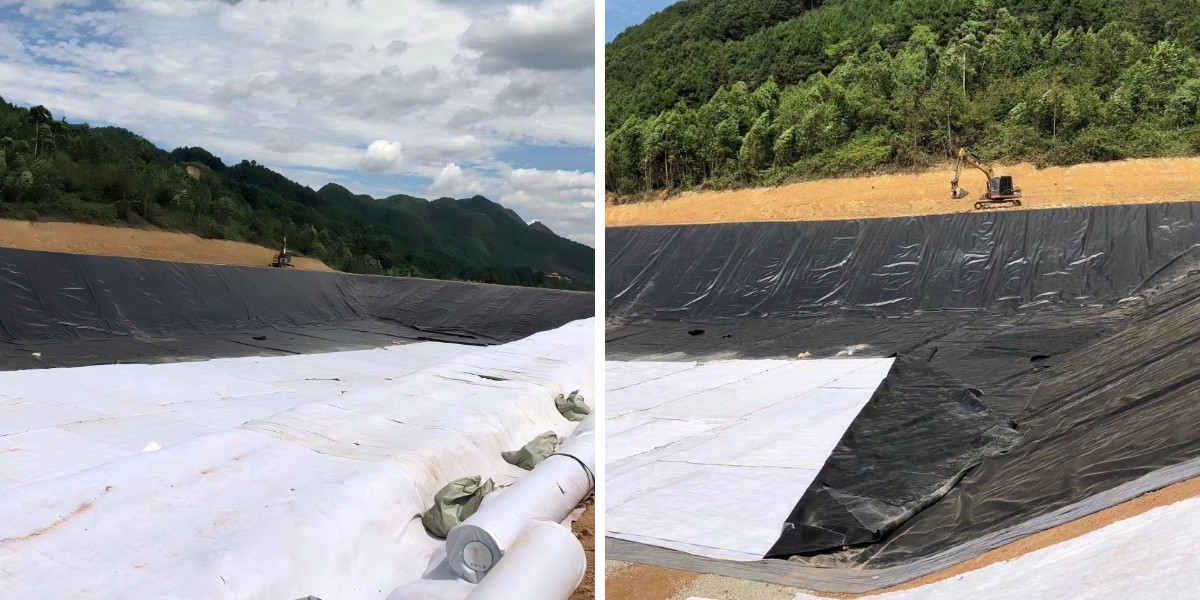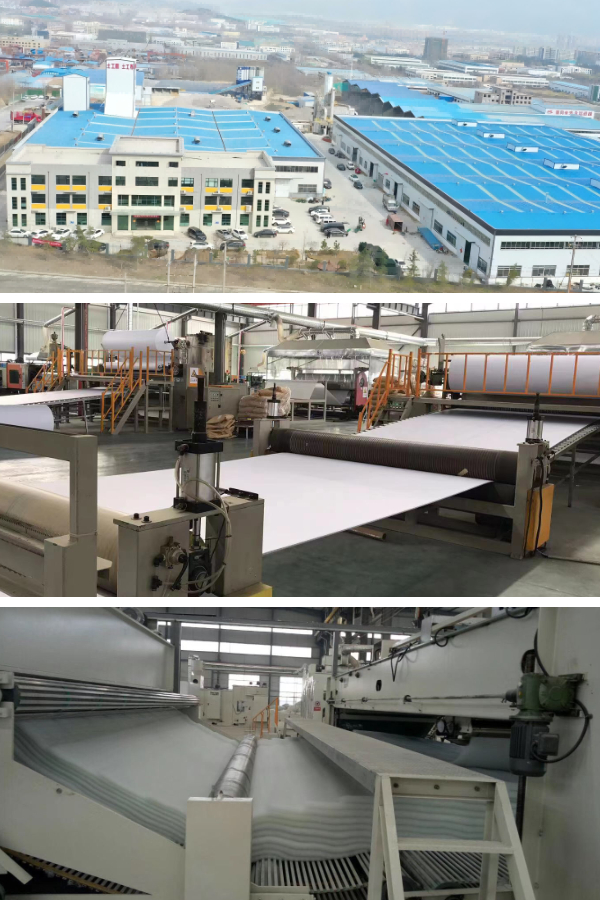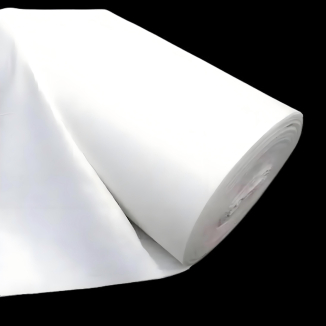Geotextile for Soil Stabilization
1. Strengthening Soil: Enhances soil shear resistance and bearing capacity, reduces load-induced settlement and deformation, and prevents structural collapse.
2. Anti-erosion and Anti-loss: Resists water erosion and rainwater erosion, prevents soil particle migration, and maintains slope/roadbed stability.
3. Adapts to Complex Terrain: Flexible enough to conform to potholes and steep slopes, eliminates blind spots, and accommodates diverse construction scenarios.
4. Cost-effective and Labor-Saving: Easy installation eliminates the need for heavy equipment, reducing material and construction costs and extending project maintenance cycles.
Products Introduction:
Geotextile for Soil Stabilization is an engineering material system based on polymer synthetic materials or natural fibers, which interacts with engineering soil through its unique physical and mechanical properties to achieve multiple functions such as soil stability, reinforcement, filtration, and drainage. As a key auxiliary material in the field of geotechnical engineering, it can effectively solve problems such as soil instability, settlement, and soil erosion in traditional engineering, significantly improving the safety, durability, and economy of engineering structures.
This product is produced using advanced weaving or non-woven processes and can be divided into various types such as woven geotextiles, non-woven geotextiles, and composite geotextiles according to engineering requirements. The core mechanism of its action is to utilize the high strength, high permeability, corrosion resistance and other characteristics of geotextiles to form a "reinforcement layer" or "filtering drainage layer" inside the soil. By dispersing soil stress, restraining soil deformation, promoting water discharge and other methods, the engineering characteristics of the soil are optimized, providing reliable technical support for various civil engineering projects.
Product Features:
1.High strength and excellent mechanical properties: Geotextile Stabilization products have high tensile strength, tear strength, and burst strength, and can withstand lateral pressure from soil and stress generated by upper load transmission. In engineering applications, it can effectively disperse concentrated stress, reduce uneven settlement of soil, and enhance the overall stability of soil. Whether in roadbed reinforcement, slope protection, or dam construction, its excellent mechanical properties can ensure the stability of engineering structures during long-term use.
2.Good filtration and drainage performance: The product has a rich pore structure inside, with high porosity and uniform distribution, which allows water to freely pass through while effectively intercepting particulate matter in the soil, preventing soil loss and piping phenomena. In drainage engineering, it can quickly drain excess water from the soil, lower the groundwater level, reduce pore water pressure, and thus improve the shear strength of the soil; In filtration engineering, it can serve to isolate soil with different particle sizes, ensuring the permeability and stability of the engineering structure.
3.Excellent corrosion resistance and durability: Geotextiles made of high-quality polymer synthetic materials (such as polypropylene, polyester, etc.) have good acid and alkali resistance, salt spray resistance, aging resistance and other properties, and can resist the erosion of chemical substances in soil and the influence of natural environmental factors (such as ultraviolet radiation, temperature changes). When the product is used for a long time in underground or outdoor environments, its performance deteriorates slowly and its service life can reach several decades, effectively reducing the maintenance cost and secondary investment of the project.
4.Lightweight, easy to construct, and economical: Compared to traditional soil stabilization materials such as steel bars and concrete, Geotextile Stabilization products are lightweight, flexible, easy to transport and handle, and have simple and fast construction operations. It can be cut and spliced according to the actual size of the construction site, with high construction efficiency and the ability to shorten the construction period. At the same time, the raw material cost of the product is relatively low, and there is no need for complex mechanical equipment during the construction process, which has a significant advantage in comprehensive engineering cost.
5.Environmentally friendly and pollution-free: The polymer materials used in the product will not produce harmful substances during production and use, and have no adverse effects on soil, groundwater, and ecological environment. After the completion of the project, geotextiles can also be recycled, which meets the environmental protection requirements of modern engineering construction and helps promote the development of green engineering.
Product Parameters:
project | metric | ||||||||||
Nominal strength/(kN/m) | |||||||||||
6 | 9 | 12 | 18 | 24 | 30 | 36 | 48 | 54 | |||
1 | Longitudinal and transverse tensile strength / (kN/m) ≥ | 6 | 9 | 12 | 18 | 24 | 30 | 36 | 48 | 54 | |
2 | Maximum elongation at maximum load in longitudinal and transverse directions/% | 30~80 | |||||||||
3 | CBR top penetration strength /kN ≥ | 0.9 | 1.6 | 1.9 | 2.9 | 3.9 | 5.3 | 6.4 | 7.9 | 8.5 | |
4 | Longitudinal and transverse tearing strength /kN | 0.15 | 0.22 | 0.29 | 0.43 | 0.57 | 0.71 | 0.83 | 1.1 | 1.25 | |
5 | Equivalent aperture O.90(O95)/mm | 0.05~0.30 | |||||||||
6 | Vertical permeability coefficient/(cm/s) | K× (10-¹~10-), where K=1.0~9.9 | |||||||||
7 | Width deviation rate /% ≥ | -0.5 | |||||||||
8 | Unit area mass deviation rate /% ≥ | -5 | |||||||||
9 | Thickness deviation rate /% ≥ | -10 | |||||||||
10 | Thickness coefficient of variation (CV)/% ≤ | 10 | |||||||||
11 | Dynamic perforation | Puncture hole diameter/mm ≤ | 37 | 33 | 27 | 20 | 17 | 14 | 11 | 9 | 7 |
12 | Longitudinal and transverse fracture strength (grab method)/kN ≥ | 0.3 | 0.5 | 0.7 | 1.1 | 1.4 | 1.9 | 2.4 | 3 | 3.5 | |
13 | Ultraviolet resistance (Xenon arc lamp method) | Longitudinal and transverse strength retention rate% ≥ | 70 | ||||||||
14 | Ultraviolet resistance (fluorescence UV lamp method) | Longitudinal and transverse strength retention rate% ≥ | 80 | ||||||||
Product Applications:
1. Road and railway engineering
Geotextile stabilization products are widely used for roadbed reinforcement in road and railway subgrade construction. Laying it under the roadbed fill or layered in the fill can enhance the overall strength of the roadbed, reduce settlement and deformation of the roadbed, and prevent diseases such as cracking and overturning of the roadbed. At the same time, it can also serve as a filter and drainage system, removing moisture from the roadbed and improving its bearing capacity and stability. In addition, laying geotextiles between the pavement base and sub base can reduce interlayer pollution and extend the service life of the pavement.
2. Slope protection and soil and water conservation engineering
In slope protection engineering, geotextile stabilization technology can be used for slope reinforcement and slope protection. By combining geotextiles with anchor rods, gabion nets, etc., a composite protective system is formed, which can effectively resist the sliding force of slope soil and prevent slope collapse. In soil and water conservation engineering, laying geotextiles on slopes can intercept soil particles generated by rainwater erosion, reduce soil erosion, promote the infiltration and discharge of slope water, and improve the ecological environment of slopes. Commonly used in scenarios such as highway slopes, railway slopes, river bank slopes, and mine reclamation slopes.
3. Water conservancy and waterway engineering
In hydraulic engineering, Geotextile Stabilization products can be used for anti-seepage, reinforcement, and drainage of dams, reservoirs, channels, and other projects. For example, laying geotextiles on the upstream slope of a dam can prevent wave erosion and water flow erosion; Laying a geotextile drainage layer inside the dam can discharge the seepage water in the dam body, reduce the pore water pressure of the dam body, and improve the stability of the dam. In water transportation engineering, it can be used for foundation treatment of port terminals, reinforcement of breakwaters, etc., to enhance the anti erosion and bearing capacity of engineering structures.
4. Construction and Municipal Engineering
In construction engineering, geotextiles can be used for foundation treatment, such as reinforcing soft soil foundations. By laying geotextiles and combining with techniques such as replacement and drainage, the consolidation of soft soil foundation can be accelerated, and the bearing capacity of the foundation can be improved. In municipal engineering, it is commonly used for the protection of underground pipelines, such as laying geotextiles around pipelines, which can reduce the pressure and friction of soil on pipelines and prevent pipeline damage; At the same time, it can also be used for soil and water conservation and drainage system construction in urban green belts.
5. Mining and Environmental Remediation Engineering
In mining engineering, Geotextile Stabilization products can be used for the reinforcement and anti-seepage of tailings dams in mines, preventing tailings dam breaches from causing environmental pollution and safety accidents. In environmental remediation projects, it can be used for the isolation and restoration of contaminated sites, such as laying geotextile isolation layers above contaminated soil to prevent the spread of pollutants; At the same time, combined with ecological restoration technology, soil and vegetation are laid on geotextiles to achieve ecological restoration of the site.
Geotextile stabilization, as a multifunctional and efficient engineering material, plays a crucial role in various engineering fields such as roads and railways, slope protection, water conservancy and transportation, construction and municipal engineering, and mining environment restoration due to its high strength, good filtration and drainage performance, excellent durability, lightweight and easy construction, and environmental protection. It can not only effectively solve the problems of soil stability, settlement, and soil erosion in traditional engineering, improve the safety and durability of engineering structures, but also reduce engineering costs, shorten construction periods, and meet the efficient, economical, and environmentally friendly requirements of modern engineering construction.
With the continuous development and progress of engineering technology, the performance of Geotextile Stabilization products will be further optimized, and their application areas will continue to expand. In future engineering construction, it will become an important supporting material for achieving engineering safety, environmental protection, and sustainable development, providing more reliable technical support for various infrastructure construction and environmental governance projects.


